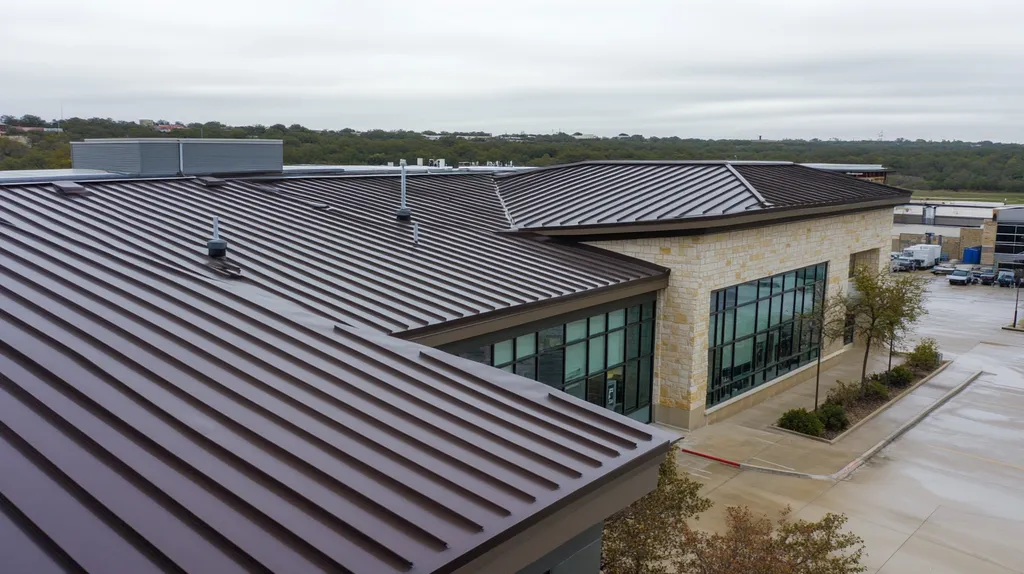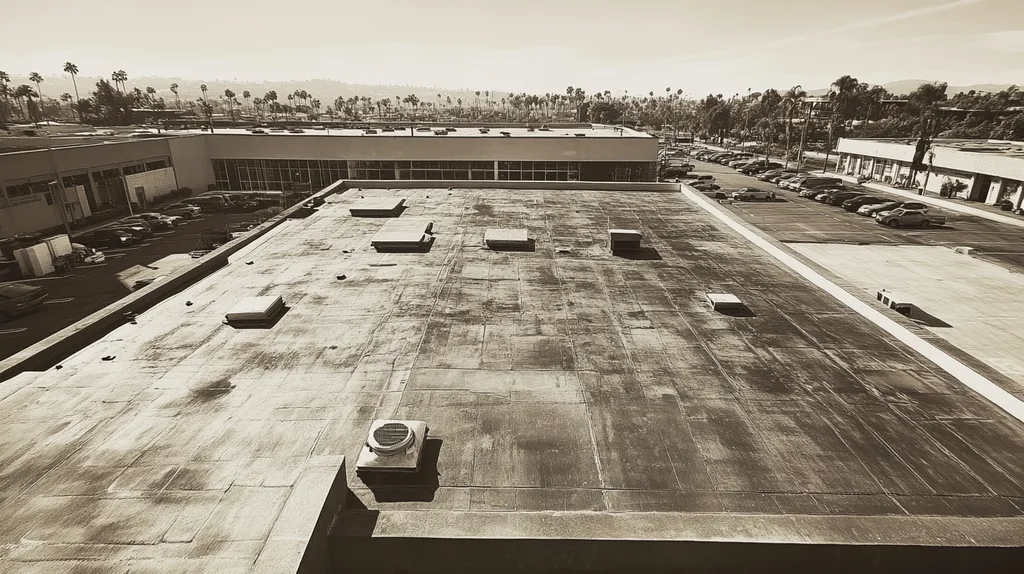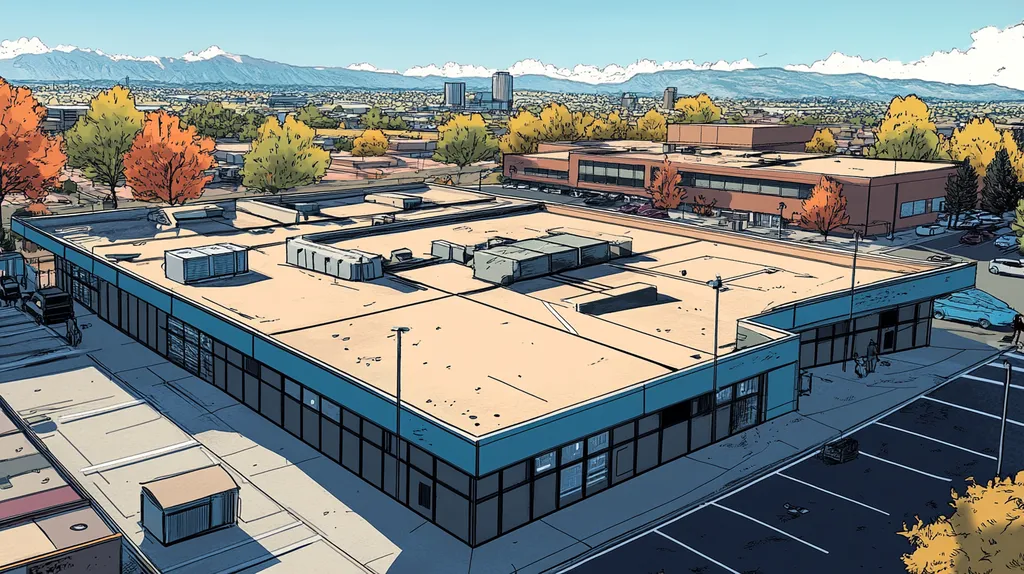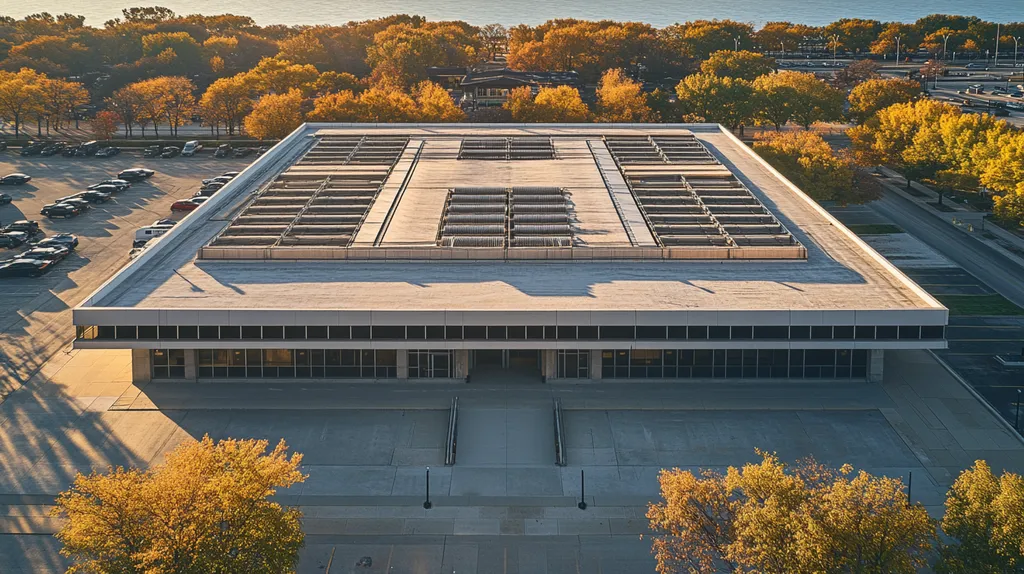Every year, over 50 workers lose their lives in preventable commercial roofing accidents, with hundreds more suffering life-altering injuries. The financial impact exceeds $500 million annually in direct costs alone.
While the industry maintains established safety protocols, mounting evidence suggests these standard practices are dangerously inadequate. Critical gaps in fall protection systems, training protocols, and emergency response procedures continue to put workers at risk.
This analysis examines why conventional safety measures fall short and presents data-driven alternatives that can dramatically reduce workplace incidents in commercial roofing operations.
SECTION 1: CURRENT PRACTICES
Commercial roofing operations remain one of the most hazardous sectors in construction, with falls representing the leading cause of serious injuries and fatalities. Each year, over 50 workers lose their lives in preventable roofing accidents, while hundreds more suffer life-altering injuries. Current industry practices, while established, often prove inadequate in preventing these incidents. This section examines the critical gaps in standard fall protection systems, regulatory compliance, and personal protective equipment usage.
Fall Protection Systems Overview
Traditional fall protection methods in commercial roofing primarily rely on three core components: guardrail systems, safety nets, and personal fall arrest systems. While these systems form the foundation of roof safety, their implementation often falls short of providing comprehensive protection.
Many existing guardrail installations suffer from improper spacing, inadequate mounting, or premature removal during project phases. These compromises create dangerous gaps in protection that can lead to catastrophic accidents.
Safety net installations frequently face similar challenges, with improper tensioning and insufficient overlap areas being common issues. When combined with inadequate inspection protocols, these deficiencies can render safety nets ineffective precisely when needed most.
Personal fall arrest systems, while potentially effective, often fail due to improper anchor point selection and insufficient equipment maintenance. Regular wear and tear on components may go unnoticed without systematic inspection procedures.
OSHA Guidelines for Roof Safety
Understanding the regulatory landscape is fundamental when addressing safety in commercial roofing. In the United States, the Occupational Safety and Health Administration (OSHA) sets forth guidelines that are crucial for every commercial roofing project. (source: Qt Commercial)
Current compliance levels with OSHA standards vary significantly across the industry. Many contractors interpret requirements differently, leading to inconsistent implementation of safety measures.
Documentation requirements often receive inadequate attention, with many sites failing to maintain proper safety records. This oversight can complicate both regulatory compliance and incident investigations.
Training programs frequently lack the depth needed to ensure thorough understanding of safety requirements. This knowledge gap leads to dangerous shortcuts and misapplication of safety protocols.
Typical Use of Personal Protective Equipment
The current approach to personal protective equipment (PPE) in commercial roofing reveals significant gaps between theory and practice. Standard equipment includes hard hats, safety glasses, work boots, and fall protection harnesses.
Equipment selection often prioritizes cost over effectiveness, resulting in PPE that may meet minimum standards but fails to provide optimal protection. This compromise can create false confidence while leaving workers vulnerable.
Maintenance protocols for PPE frequently lack systematic oversight and documentation. Equipment degradation may go unnoticed until failure occurs, potentially during critical moments.
Worker compliance with PPE requirements remains inconsistent, particularly during challenging weather conditions or time-sensitive projects. This behavioral pattern undermines even the most robust safety equipment provisions.
SECTION 2: SYSTEMIC ISSUES
Behind every roofing accident lies a complex web of systemic failures that compromise worker safety and project integrity. Industry data reveals that over 60% of commercial roofing incidents stem from preventable systemic issues rather than isolated mistakes. These failures not only endanger workers but also expose property owners to significant liability risks and project delays. Understanding and addressing these systemic problems is crucial for ensuring safer commercial roofing operations.
Inadequate Training Protocols
Most commercial roofing crews receive only basic safety training that fails to address the full spectrum of modern roofing challenges. This inadequacy becomes particularly evident when workers encounter complex situations requiring quick decision-making under pressure.
Current training methods often prioritize speed over thoroughness, leaving critical safety gaps. Many programs lack hands-on components and fail to incorporate lessons learned from recent incidents.
Documentation of training completion frequently exists without verification of actual comprehension. This disconnect leads to situations where workers hold certifications but lack practical understanding of crucial safety procedures.
High worker turnover in the industry further compounds these training deficiencies. New crew members may receive abbreviated training to meet immediate staffing needs, creating additional safety risks.
Suboptimal Equipment Maintenance Practices
Equipment maintenance in commercial roofing often follows reactive rather than preventive protocols. This approach leads to unexpected failures and increased safety risks during critical operations.
Many contractors lack systematic inspection schedules for safety equipment. Visual checks may miss subtle wear patterns that could lead to catastrophic failures.
Documentation of maintenance activities frequently falls short of industry best practices. Without proper records, tracking equipment lifecycles and identifying potential safety issues becomes nearly impossible.
Budget constraints often result in delayed equipment replacement or repairs. This false economy creates unnecessary risks and can lead to costly accidents or project delays.
Regulatory Compliance Challenges
The commercial roofing industry faces increasing complexity in regulatory requirements, making full compliance increasingly challenging. Many contractors struggle to interpret and implement evolving safety standards effectively.
Communication gaps between regulatory bodies and roofing contractors often result in misunderstandings about compliance requirements. This disconnect leads to inconsistent implementation of safety measures across different projects.
Smaller roofing operations particularly struggle with maintaining comprehensive compliance programs. Limited resources and expertise can result in overlooked requirements or incomplete implementation.
The cost of maintaining full regulatory compliance can strain project budgets. However, cutting corners on compliance inevitably leads to greater expenses through accidents, violations, and increased insurance premiums.
SECTION 3: MISSED OPPORTUNITIES
The commercial roofing industry faces a critical juncture where overlooked safety opportunities contribute to preventable accidents and financial losses. Recent data shows that over 75% of roofing incidents could have been prevented through the adoption of readily available safety innovations and protocols. Despite technological advances and improved understanding of risk factors, many commercial roofing operations continue to rely on outdated practices that compromise worker safety and project outcomes.
Unexplored Safety Technologies
Advanced monitoring systems and digital safety platforms represent a significant opportunity for enhancing roofing safety. These technologies can provide real-time hazard detection and worker tracking, dramatically reducing response times during emergencies.
Automated inspection drones and thermal imaging systems enable comprehensive roof assessments without exposing workers to unnecessary risks. These tools can identify structural weaknesses and potential hazards before they become critical safety issues.
Smart personal protective equipment, including connected harnesses and environmental sensors, offers unprecedented insight into worker safety conditions. These devices can alert supervisors to dangerous situations before accidents occur.
Integration of artificial intelligence and machine learning systems can predict potential safety issues based on historical data and current conditions. This predictive capability allows for proactive rather than reactive safety management.
Inefficient Emergency Response Plans
Current emergency response protocols often lack the sophistication needed for modern commercial roofing operations. Many plans fail to account for complex scenarios involving multiple trades or specialized equipment.
Communication systems during emergencies frequently rely on outdated methods that can break down during critical moments. Modern digital communication platforms could significantly improve response coordination and effectiveness.
Emergency evacuation routes and procedures rarely receive regular updates to reflect changing site conditions. This oversight can lead to dangerous confusion during actual emergencies.
Training exercises for emergency scenarios typically focus on basic situations while ignoring more complex but realistic scenarios. This gap leaves teams unprepared for the full range of potential emergencies.
Overlooked Environmental Factors
Environmental monitoring systems capable of tracking weather patterns and material conditions remain underutilized in commercial roofing. These systems could provide crucial early warnings for dangerous working conditions.
Heat stress and cold exposure protocols often lack the precision needed for varying worker conditions and activity levels. More sophisticated monitoring could prevent weather-related injuries and fatalities.
Wind speed and direction measurements frequently rely on general weather reports rather than site-specific data. This imprecision can lead to dangerous situations during material handling and installation.
Many operations lack comprehensive protocols for monitoring and responding to changing environmental conditions throughout the workday. Regular environmental assessment could prevent numerous weather-related incidents.
SECTION 4: ROOT CAUSES
Each year, preventable roofing accidents claim dozens of lives and result in millions in damages, yet the underlying causes often go unaddressed. Analysis of commercial roofing incidents reveals that over 80% stem from three fundamental issues that persist across the industry. Understanding these root causes is essential for property owners and facility managers who must evaluate and improve their roofing safety protocols to protect both workers and assets.
Lack of Risk Assessment Frameworks
Modern commercial roofing projects demand sophisticated risk assessment protocols that many organizations have yet to implement. Without structured frameworks, critical hazards often go unidentified until accidents occur.
Current assessment practices typically rely on individual judgment rather than systematic evaluation. This approach creates dangerous inconsistencies in how risks are identified and managed across different projects and teams.
Most risk assessments fail to consider the dynamic nature of roofing projects. As conditions change throughout project phases, new hazards emerge that remain undetected under static evaluation methods.
The absence of standardized assessment tools leaves many organizations unable to effectively prioritize safety investments. This deficiency leads to misallocation of safety resources and gaps in protection.
Inconsistent Enforcement of Standards
Safety standards in commercial roofing vary significantly in their implementation and enforcement across different organizations. This inconsistency creates confusion among workers and increases the likelihood of accidents.
Many companies maintain robust written safety policies but fail to enforce them consistently. This disconnect between policy and practice undermines the effectiveness of even well-designed safety programs.
Supervision of safety protocols often lacks the necessary authority or resources for proper enforcement. Without clear accountability, violations may go uncorrected until serious incidents occur.
High-pressure project schedules frequently lead to selective enforcement of safety standards. This compromise creates dangerous precedents that can persist long after initial time pressures have passed.
Limited Data-Driven Decision Making
The commercial roofing industry lags behind other construction sectors in leveraging data analytics for safety improvements. Most organizations collect only basic incident data, missing opportunities to identify patterns and predict potential hazards.
Current safety metrics often focus on lagging indicators like accident rates rather than leading indicators that could prevent incidents. This reactive approach limits the effectiveness of safety interventions.
Few companies maintain comprehensive databases of near-misses and minor incidents. Without this valuable data, organizations struggle to identify emerging safety trends before they result in serious accidents.
The lack of industry-wide data sharing further hampers safety improvements. Isolated pockets of knowledge prevent the broader adoption of successful safety strategies and lessons learned from incidents.
DATA DRIVEN EVIDENCE
Alarming statistics reveal the true cost of inadequate roofing safety measures. With over 50 workplace fatalities per 100,000 workers annually, commercial roofing ranks among construction’s deadliest sectors. Despite technological advances and improved regulations, preventable accidents continue to plague the industry, resulting in devastating human costs and massive financial losses for property owners.
Injury Statistics in Roofing Industry
Falls remain the leading cause of death in commercial roofing, accounting for over 33% of all fatalities. Recent data shows that for every fatal incident, dozens more workers suffer severe injuries requiring extensive medical care and lost work time.
Most concerning is the steady rise in incidents involving experienced workers, suggesting that complacency and pressure to meet deadlines often override safety protocols. These statistics highlight systematic failures in current safety approaches.
Small and medium-sized roofing operations face particularly high incident rates, often due to limited safety resources and training capabilities. This disparity creates significant liability exposure for property owners working with smaller contractors.
Weather-related incidents show concerning upward trends, with heat stress and sudden storms contributing to a growing percentage of accidents. This pattern demands more sophisticated environmental monitoring and response protocols.
Cost Analysis of Safety Measures
Comprehensive safety programs require significant initial investment but deliver compelling returns. Industry analyses demonstrate that every dollar invested in proper safety measures yields $4-6 in reduced insurance premiums, workers’ compensation costs, and liability exposure.
Legal settlements from roofing accidents frequently exceed $1 million, while OSHA fines for safety violations can reach $145,027 per willful violation. These figures dwarf the cost of implementing proper safety measures.
Project delays caused by accidents typically add 20-30% to completion times, creating cascading costs for property owners. Proper safety investments help ensure projects stay on schedule and within budget.
Insurance carriers increasingly offer premium reductions for documented safety programs. These incentives can offset 40-60% of safety implementation costs within the first year.
Effectiveness of Safety Training Programs
Properly structured training programs demonstrate measurable impact on incident rates. Organizations implementing comprehensive safety training report 50-70% reductions in workplace accidents within the first year.
Understanding the regulatory landscape through proper training proves fundamental when addressing safety in commercial roofing. In the United States, the Occupational Safety and Health Administration (OSHA) sets forth guidelines that are crucial for every commercial roofing project. (source: Qt Commercial)
Virtual reality training systems show particular promise, reducing training time by 40% while improving knowledge retention rates by 75%. This technology enables workers to safely practice emergency responses and complex procedures.
Regular refresher training correlates strongly with sustained safety improvements. Companies conducting monthly safety reviews maintain significantly lower incident rates than those relying on annual updates.
SECTION 6: ALTERNATIVE SOLUTIONS
Every day, commercial roofing workers face life-threatening risks that traditional safety measures fail to address. Recent industry data reveals that 80% of roofing accidents could be prevented through modern safety solutions, yet many facilities continue to rely on outdated practices. The cost of inaction is staggering – both in human casualties and financial impact, with the average roofing accident resulting in over $100,000 in direct costs alone.
Implementing Advanced Safety Technologies
Digital monitoring systems now offer unprecedented visibility into rooftop operations. Advanced sensor networks can detect structural instabilities, track worker locations, and monitor environmental conditions in real-time, allowing immediate response to potential hazards.
Drone-based inspection platforms have revolutionized hazard assessment capabilities. These systems can thoroughly examine roof conditions without exposing workers to unnecessary risks, while providing detailed documentation of potential safety issues.
Connected safety equipment has emerged as a game-changing technology. Smart harnesses with built-in fall detection, automated check-in systems, and wearable environmental sensors provide constant monitoring of worker safety status.
Cloud-based safety management platforms enable real-time coordination between ground teams and rooftop workers. These systems maintain digital safety logs, track equipment maintenance schedules, and instantly alert supervisors to developing hazards.
Developing Comprehensive Training Modules
Modern training systems must move beyond basic compliance to address the full complexity of commercial roofing operations. Virtual reality simulators now allow workers to practice emergency procedures and complex installations in safe, controlled environments.
Regular micro-training sessions delivered through mobile devices help maintain safety awareness. These brief, focused modules can be completed during natural work breaks, ensuring continuous reinforcement of critical safety concepts.
Understanding the regulatory landscape is fundamental when addressing safety in commercial roofing. In the United States, the Occupational Safety and Health Administration (OSHA) sets forth guidelines that are crucial for every commercial roofing project. (source: Qt Commercial)
Cross-training programs ensure all team members understand each other’s roles and safety responsibilities. This comprehensive knowledge improves coordination and enables faster response during emergencies.
Integrating Predictive Maintenance Strategies
Smart monitoring systems now enable truly predictive maintenance approaches. IoT sensors can detect early signs of roof deterioration, allowing repairs to be scheduled before conditions become hazardous for workers.
Data analytics platforms track historical patterns to identify high-risk conditions. This intelligence helps facility managers schedule maintenance during optimal weather windows and avoid emergency repairs under dangerous conditions.
Automated inspection protocols ensure consistent safety evaluations. Regular drone surveys combined with AI analysis can spot developing issues that might compromise worker safety during maintenance operations.
Digital twin technology creates accurate virtual models of roofing systems. These detailed representations allow maintenance teams to plan work procedures safely, identifying hazards before anyone sets foot on the roof.
Moving Forward
The commercial roofing industry stands at a critical crossroads, with over 50 preventable deaths occurring annually despite available solutions.
Current safety practices, focused primarily on minimum compliance, leave dangerous gaps that continue to put workers at risk and expose property owners to massive liability.
The data is clear: implementing comprehensive safety programs yields a 4-to-1 return on investment through reduced insurance costs, fewer accidents, and improved project efficiency.
Advanced technologies, from connected PPE to AI-driven monitoring systems, now offer unprecedented opportunities to protect workers while streamlining operations.
The choice facing property owners is stark: embrace modern safety solutions or accept the mounting human and financial costs of outdated practices.
FREQUENTLY ASKED QUESTIONS
Q. What are current practices in commercial roof safety?
A. Current practices often rely on guardrails, safety nets, and fall arrest systems. However, many implementations fall short, leading to gaps in protection. These inadequacies expose workers to serious risks during operations.
Q. What systemic issues affect industrial roof safety?
A. Systemic issues include inadequate training, poor equipment maintenance, and compliance challenges. These factors often lead to preventable accidents and compromise both worker safety and project integrity.
Q. What missed opportunities exist in commercial roof safety?
A. Many roofing operations overlook advanced safety technologies and modern emergency response plans. Adoption of these innovations can drastically reduce risks and prevent accidents in commercial roofing.
Q. What are the root causes of accidents in commercial roofing?
A. Root causes often include a lack of risk assessment frameworks, inconsistent enforcement of standards, and limited data-driven decision making. Addressing these issues is crucial for enhancing safety outcomes.
Q. How significant are injury statistics in roofing?
A. Injury statistics reveal that falls are the leading cause of fatalities in this industry. The data highlights the necessity for better safety measures to protect workers and reduce preventable incidents.
Q. What alternative solutions improve commercial roof safety?
A. Implementing advanced safety technologies, such as digital monitoring systems and predictive maintenance, can significantly enhance worker safety. These proactive measures reduce accidents and improve overall productivity on job sites.
Q. How can facility managers ensure better roof safety compliance?
A. Facility managers should focus on ongoing training and regular audits of safety protocols. Ensuring compliance with updated regulations and effective documentation practices is essential for improving roof safety standards.











